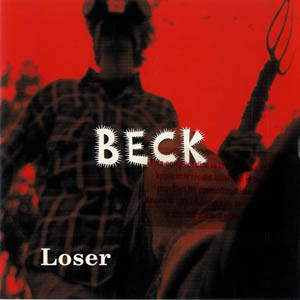Oklahoma! |
|
 |
Recorded: 10/20/43 – 5/24/44 Released: December 4, 1944 Peak: 4 US Sales (in millions): 3.0 US Genre: show tunes |
|
 |
Recorded: August 1, 1955 Peak: 18 US, 13 UK Sales (in millions): 2.0 US Genre: show tunes |
Tracks (from Cast Album): Song Title (Performers)
Tracks (from Soundtrack): Song Title (Performers)
Singles/Hit Songs: As was common in the pre-rock era, songs from musicals were often recorded by artists not associated with the musical and released as singles. Here are some of the most notable hit singles resulting from the show:
|
Rating: 4.395 out of 5.00 (average of 11 ratings for cast album and soundtrack combined)
Quotable: “Often called Broadway’s greatest ever” – Joel Whitburn, Pop Memories 1890-1954 Awards (Cast Album): (Click on award to learn more). Awards (Soundtrack): (Click on award to learn more). |
About the Show: “The Broadway opening of Oklahoma! in 1943 is remembered as a landmark in American musical theater. The show was the first written by the team of composer Richard Rodgers and lyricist/librettist Oscar Hammerstein II, though both were theater veterans. Rodgers & Hammerstein turned out an exuberant, tuneful score in which all the songs grew out of the characters and the situations, an unusual approach in musical theater, where songs often had little relationship to the action. The point was made right at the start, when the choral number that opened most musicals was eschewed in favor of an off-stage leading man coming on and singing Oh, What a Beautiful Mornin’.” RC “It ran over five years, becoming the longest running musical in Broadway history up to its time. The score threw off several hits and standards, including ‘Oh, What a Beautiful Mornin’,’ The Surrey with the Fringe on Top, People Will Say We’re in Love, and the stirring title tune.” RC Oklahoma! “also made history as the first album…to become a major chart hit, and the first significant original-cast album.” JW “Although there had been a tradition of recording music from stage works in their original form with the stage performers in Great Britain, such recordings were only occasional in the U.S., and the idea of putting together an album of several 78 rpm records containing a show’s major songs as performed on-stage was relatively new. On the day that Oklahoma! opened, the American record industry was closed down by a musicians strike but shortly after Decca Records settled with the union, company president Jack Kapp brought the Oklahoma! principals together in the recording studio and cut 12 of the show’s songs…The result…was a commercial smash that forever changed the record business and led to the domination of record sales by the cast and soundtrack albums for the next 20 years.” RC It would more than a dozen years after the Broadway debut before the movie version emerged. Rodgers and Hammerstein were giving enough power over the production that they “assured that it would be more faithful than most Hollywood treatments. Only two songs, Lonely Room and It’s a Scandal! It’s a Outrage!, were excised from the stage show for the two-and-a-half-hour film, for which conductor Jay Blackton and Robert Russell Bennett's orchestrations were retained.” RS “The casting responded more to musical values than to box office clout, with Gordon MacRae, best known for several cinematic pairings with Doris Day, taking the male lead role of Curly and 20-year-old Shirley Jones, a Rodgers and Hammerstein discovery, making her film debut as Laurey, the female lead. The two, along with Gloria Grahame in the showcase role of lusty Ado Annie, brought a vocal assurance to their singing that allowed them to be intimate and conversational, giving detail to an otherwise lavish (and possibly oversized) production.” RS “These qualities come off especially well on the soundtrack album, as do Bennett’s arrangements, which really shine in the stereo separation denied them on the original Broadway cast album. The result is an outstanding rendering of the score that gives it a bigger, broader interpretation and has continued to sound impressive over the decades, which may be one reason why the album, which topped the charts upon release and sold more than two million copies, has remained in print continually since it first appeared.” RS
|
Resources and Related Links:
Other Related DMDB Pages: First posted 6/28/2010; last updated 12/21/2021. |









